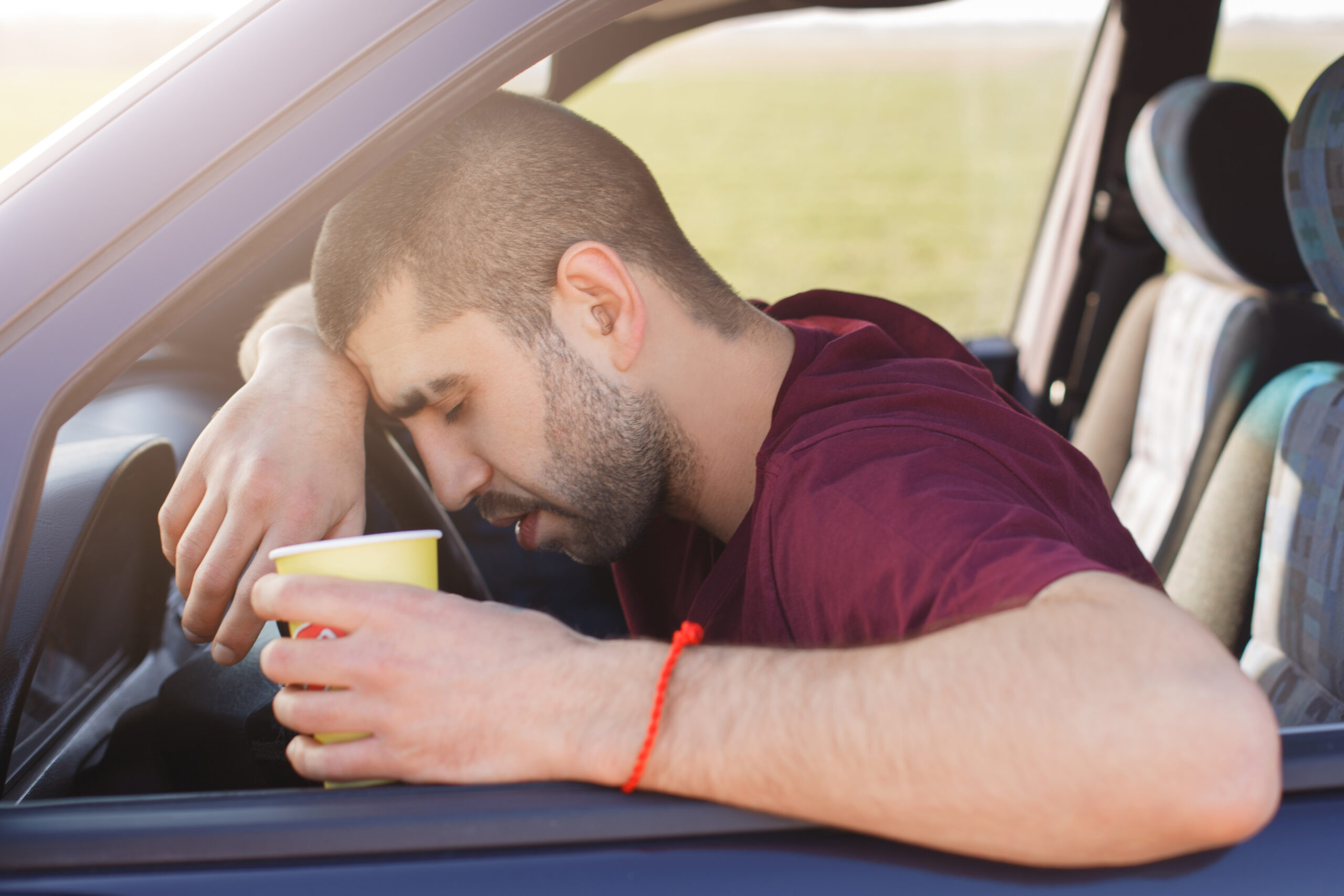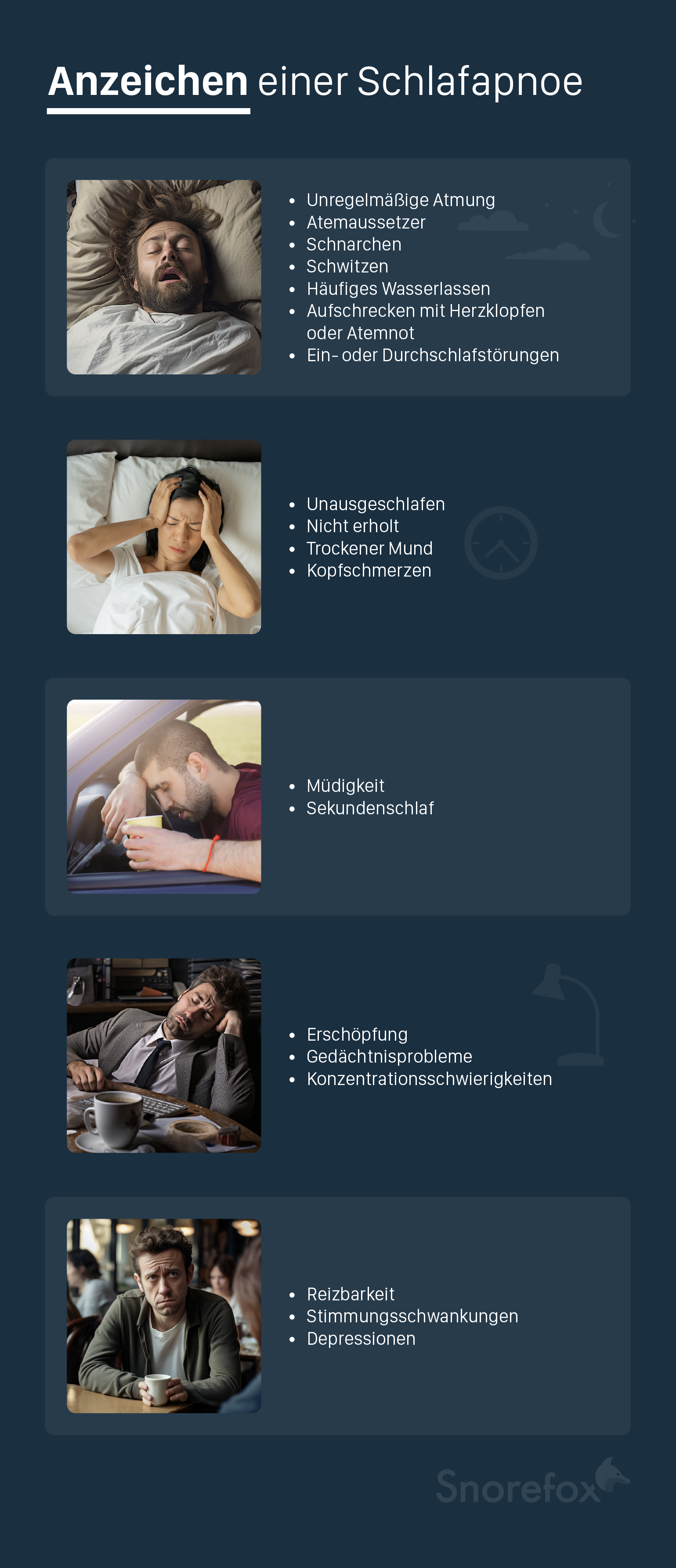
Sleep apnoea is a common disorder, but is often not recognized. Around 80% of sleep apnoea sufferers are unaware of their nocturnal breathing interruptions. The Recognizing signs of sleep apnoea is often not easyas the Symptoms varied and often unspecific are.
For example, many symptoms are seen as normal or blamed on everyday stress. As a result, many sufferers do not realize that they may be experiencing signs of sleep apnea.
It is important to recognize the symptoms and signs and to interpret them correctly, because a Sleep apnea is a serious condition. If left untreated, their effects can lead to serious health problems. Pay attention to possible symptoms and do not ignore them.
Sleep apnoea causes you to stop breathing at night. Many people believe that if this were the case with them, they would notice it. In reality, however, only very few sufferers notice it.
Only a minority of those affected wakes up from single breathing interruptions with symptoms such as Shortness of breath, palpitations or panic and can still remember it the next morning.
Most people do not notice that they stop breathing at night. The wake-up reaction to reactivate breathing is so short that sleep is immediately resumed and you no longer remember it the next morning.
Much more often it is the partnerswho notice irregular breathing patterns or breathing interruptions during sleep. If this is the case for you, it is important that you follow up on this suspicion.
Sleep apnea is often accompanied by snoring, but this is not for all those affected the case. Even if sleep apnoea is accompanied by snoring, this does not necessarily mean that the snoring is conspicuous or loud.
You should therefore never rule out the suspicion of sleep apnea in yourself or do not pursue it any further, just because you don't snore or only snore a little. If you notice other signs of sleep apnea, you should definitely take them seriously and have them investigated further.
The following also play a role Gender-specific differences plays a role. Snoring as a sign of sleep apnea is more common in men than in women. Women often report more subtle symptoms, such as insomnia, depression or morning headaches, which often makes it more difficult to recognize sleep apnoea.
Sleep apnea is accompanied by a variety of signs. Viewed in isolation, the symptoms are relatively non-specific, so it is advisable to take a look at the overall picture. It is important not only to pay attention to snoring or obvious breathing stops, but also not to overlook more subtle signs.
As the nocturnal breathing interruptions caused by sleep apnoea disrupt restful sleep, sleep apnoea is mainly recognized by Daytime sleepiness and exhaustion. Those affected often do not feel properly rested and refreshed in the morning.
Daytime sleepiness can last until involuntary falling asleep in everyday situations. This increases the risk of accidents, especially in road traffic. Nevertheless, there are also sufferers who do not feel tired during the dayor do not explicitly perceive this tiredness.

Other symptoms are morning headaches due to the lack of oxygen at nightdry mouth in the morning and night sweats or Frequent urination at night.
Since those affected get little restful sleep, they often have Loss of performance. They find it difficult to remember, concentrate, make decisions or solve problems. This can lead to professional difficulties.
It is also often more difficult to interact with other people. People who sleep badly all the time are more prone to Irritability and mood swings. Those affected can Depression develop or even Personality changes.
List of symptoms at a glance:
If you notice symptoms of sleep apnea, you should definitely take seriously and initiate further stepsto have sleep apnea diagnosed.
Sleep apnea cannot be diagnosed beyond doubt on the basis of symptoms alone. The diagnosis of sleep apnoea always requires a Analysis of breathing patterns with special devices during sleep.
A sleep physician is the right person to contact here. However, if you would like to analyze your breathing patterns yourself first, the first step is to the Snorefox app use. Snorefox recognizes the occurrence of breathing stops based on the breathing sounds.
Even if the app is not a substitute for a professional medical diagnosis, it helps to classify the symptoms and makes it easier to decide whether to see a doctor.
A sleep physician then makes the final diagnosis and discusses various individual treatment options. These can not only provide symptom relief and improve the quality of sleep, but at best also Prevent health complications.
Sleep apnoea is a widespread but often unrecognized disorder of which around 80% of those affected are unaware. Recognizing that you are suffering from sleep apnoea is made more difficult by the fact that the symptoms are varied and often unspecific.
Interrupted breathing at night is a key signwhich, however, is often not noticed by those affected. The accompanying symptom Snoring is not mandatory and is rarely a priority, especially for women.
Sleep apnea impairs restful sleep and manifests itself primarily in Daytime tiredness, exhaustion, morning headaches and loss of performance. Those affected can also work with Mood swings, irritability and memory problems have to contend with.
The symptoms should be taken seriously and clarified further. The Snorefox app can serve as a first step towards self-analysis of breathing patterns and assists with the classification of symptoms and the decision to see a doctor.